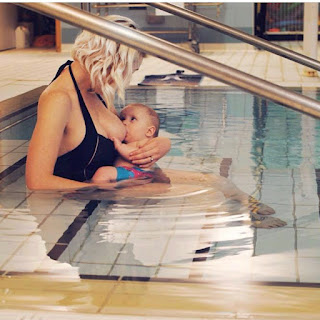When I opened the Beco woven carrier I loved it right away.
The woven purple and white design was beautiful and it felt so soft to touch.
I couldn’t wait to try it out.
I absolutely love woven carriers - the material seems to just mould into your little ones body shape a lot comfier than some of your more structured carriers. Depending on the weather and the temperature, I found that the Beco on sunnier days was a godsend because it wasn’t so thick and heavy.
So let’s talk specifics!
Beco describe this carrier as:
‘...designed to carry babies from birth to pre-school (7-45lbs) in three comfortable carrying positions - front, back and hip.'
I also love the sliding chest strap - especially so for back carrying. Gone are the days where I couldn’t reach over my own head to find the straps to clip. On the Beco, they just slide up to where you need them. So much easier!
I really like the hood too - as it doesn’t come off it means I’m less likely to lose it which is always a good thing! It could do with being a little wider as my daughter had a habit of laying sideways and it didn’t hold her head as well as it could have done, and it’s also quite thin in comparison to other slings I’ve used.
Cleaning the carrier was also super easy. The instructions as per Beco are to spot clean using mild detergent and air-dry - this will increase the life of your carrier and maintain the depth of colour.
I found simply putting in the machine on a cool cycle every few months kept it clean and then I’d dry it either on the line if it wasn’t too sunny outside or on a airer next to a radiator.
The woven purple and white design was beautiful and it felt so soft to touch.
I couldn’t wait to try it out.
I absolutely love woven carriers - the material seems to just mould into your little ones body shape a lot comfier than some of your more structured carriers. Depending on the weather and the temperature, I found that the Beco on sunnier days was a godsend because it wasn’t so thick and heavy.
So let’s talk specifics!
Beco describe this carrier as:
‘...designed to carry babies from birth to pre-school (7-45lbs) in three comfortable carrying positions - front, back and hip.'
I wouldn’t disagree; I only ever carry inward facing on both my front and back and as a back and front carrier it’s so comfy! I had to get used to the depth of the seat as when I first started using it, I realised on my back especially there was a bit of extra material under her. Once I mastered the position she needed to sit comfortably in she would often fall asleep in the carrier because it was so comfy for her too.
The best parts about this sling for me are the pocket on the waistband because IT HAS A ZIP GUYS! I can’t tell you how handy that is for loose change!
Product Features
- For babies 7-45lbs (Infant Insert included)
- EXCELS from 1-3 years
- Deep, darted seat with padded leg openings
- Adjustable chest strap fitted to easy slider system
- Tri-lock Safety Shoulder Strap Buckles
- Detachable hood which can be stored in pocket
- Crossable shoulder straps offering a personalised fit for all body sizes
- Supportive waist belt 24-54" with zippered pocket
- Perfect fit adjusters to ensure a snug fit for petite wearers
- Multiple ergonomic positions: front (inward facing), back and hip carry
I also love the sliding chest strap - especially so for back carrying. Gone are the days where I couldn’t reach over my own head to find the straps to clip. On the Beco, they just slide up to where you need them. So much easier!
I really like the hood too - as it doesn’t come off it means I’m less likely to lose it which is always a good thing! It could do with being a little wider as my daughter had a habit of laying sideways and it didn’t hold her head as well as it could have done, and it’s also quite thin in comparison to other slings I’ve used.
Cleaning the carrier was also super easy. The instructions as per Beco are to spot clean using mild detergent and air-dry - this will increase the life of your carrier and maintain the depth of colour.
The Beco can also be machine washed on a cool cycle when necessary, again using a mild detergent. Do not tumble dry or bleach. Store away from natural sunlight.
I found simply putting in the machine on a cool cycle every few months kept it clean and then I’d dry it either on the line if it wasn’t too sunny outside or on a airer next to a radiator.
The lovely thing again with this carrier from SlumberRoo is that it grows with baby, so above you can see my nephew at 4 months in the carrier followed by my 2 year old. Both as comfy as each other - for both baby and wearer!




























